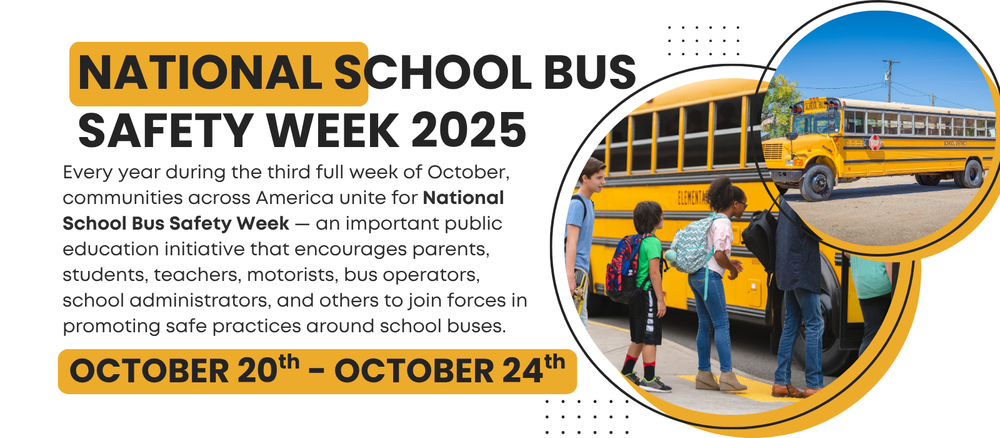2025 National School Bus Safety Week: October 20–24
Every year during the third full week of October, communities across America unite for National School Bus Safety Week — an important public education initiative that encourages parents, students, teachers, motorists, bus operators, school administrators, and others to join forces in promoting safe practices around school buses.
Why it Matters:
The school bus is one of the safest modes of transportation — less than 1% of all traffic fatalities involve children on school transportation vehicles. NHTSA
But the greatest risks occur not while riding the bus itself, but when children are approaching, boarding, or exiting a bus. NHTSA
That’s why everyone who shares the road or interacts with school bus routes plays a role in keeping children safe.
Safety tips from NHTSA
Here are some key safety practices to emphasize during School Bus Safety Week:
For motorists / drivers:
Stop when the bus stops. Whenever you see a school bus with red flashing lights and extended stop-arm, you must stop—and wait until the lights go off and the stop-arm is withdrawn before proceeding. NHTSA
Watch for yellow flashing lights. Yellow means the bus is preparing to stop; slow down, proceed with caution, and be ready to stop. NHTSA
Know the laws in your state. All states prohibit passing a bus when its stop signals are active. NHTSA
Stay alert in school zones or bus routes. Children may be nearby or crossing unexpectedly.
For parents, guardians, and students:
At the bus stop / before the bus arrives:
Plan to arrive at the bus stop at least five minutes early to avoid rushing. NHTSA
Wait at least 10 feet (i.e. “five giant steps”) away from the curb or roadway. NHTSA
The bus stop isn’t for playing, running, or distractions.
When boarding or exiting the bus:
Wait until the bus is fully stopped, the door opens, and the driver gives the okay before getting on or off. NHTSA
Use the handrails—don’t skip steps or jump. NHTSA
Never walk behind the bus. If a child must cross the street, they should cross in front of the bus, at least 10 feet ahead, and make eye contact with the driver first. NHTSA
If something is dropped near the bus (a book, phone, etc.), the child should tell the bus driver rather than retrieving it independently. NHTSA
During October 20–24, 2025, let’s recommit to protecting our children around school buses. Whether you drive, walk, ride, or manage transportation, your awareness, adherence, and cooperation make a difference. Together, we can make every school bus ride—and every trip to or from the bus—safer.

